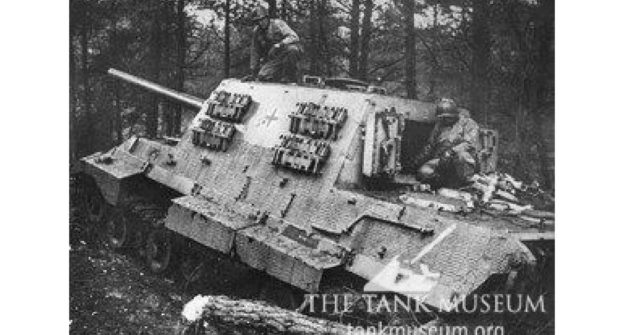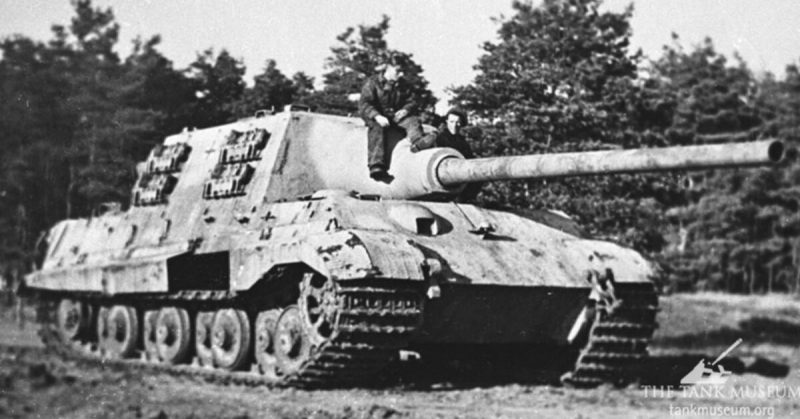The Tank Museum’s Jagdtiger has chassis no. 305004. It was one of eleven (plus an unarmoured prototype) which were fitted with the Porsche suspension system.
It was built in July 1944 and sent to the Sennelager testing ground just north of the city of Paderborn, where it was used for trials.
Towards the end of March 1945 units of the American XIX Corps, including 3rd Armored Division and the 703rd Tank Destroyer Battalion were advancing towards Paderborn. The Germans assembled as many armored units as they could to try and fend off their attack. One of these was an improvised unit called Panzergruppe Paderborn manned by instructors and equipped with an assortment of vehicles from test units, including Tiger Is, Tiger IIs, Panthers and even an old Panzer III. It is unclear whether the Jagdtiger was also a part of this force, or whether it took any part in the fighting.
Fighting around Paderborn and Sennelager continued for around a week. Although the German forces in and around the training area put up heavy resistance, most American units simply bypassed them to the north or south. By the 5th April, it was clear that the forces left had to withdraw or risk being cut off. The Museum’s Jagdtiger was abandoned and captured by the Americans the next day. It was photographed almost immediately afterward by a photographer attached to XIX Corps.

Although it had been captured by the Americans, after the war Paderborn became part of the British Zone of Occupation. Both the Jagdtiger and the Pre-production King Tiger now in the Tank Museum were seen at Haustenbeck by British Ministry of Supply Researchers on the 25th August 1945.
After being tested at Sennelager (with some of this captured on film) it was sent to the School of Tank Technology at Chertsey in the UK before arriving at the Tank Museum in 1952. It is missing its rear engine plate cover, its third suspension unit and two road wheels on its left-hand side but still retains its original Zimmerit anti-magnetic mine paste.
This piece originally appeared at The Tiger Collection. Check it out!
